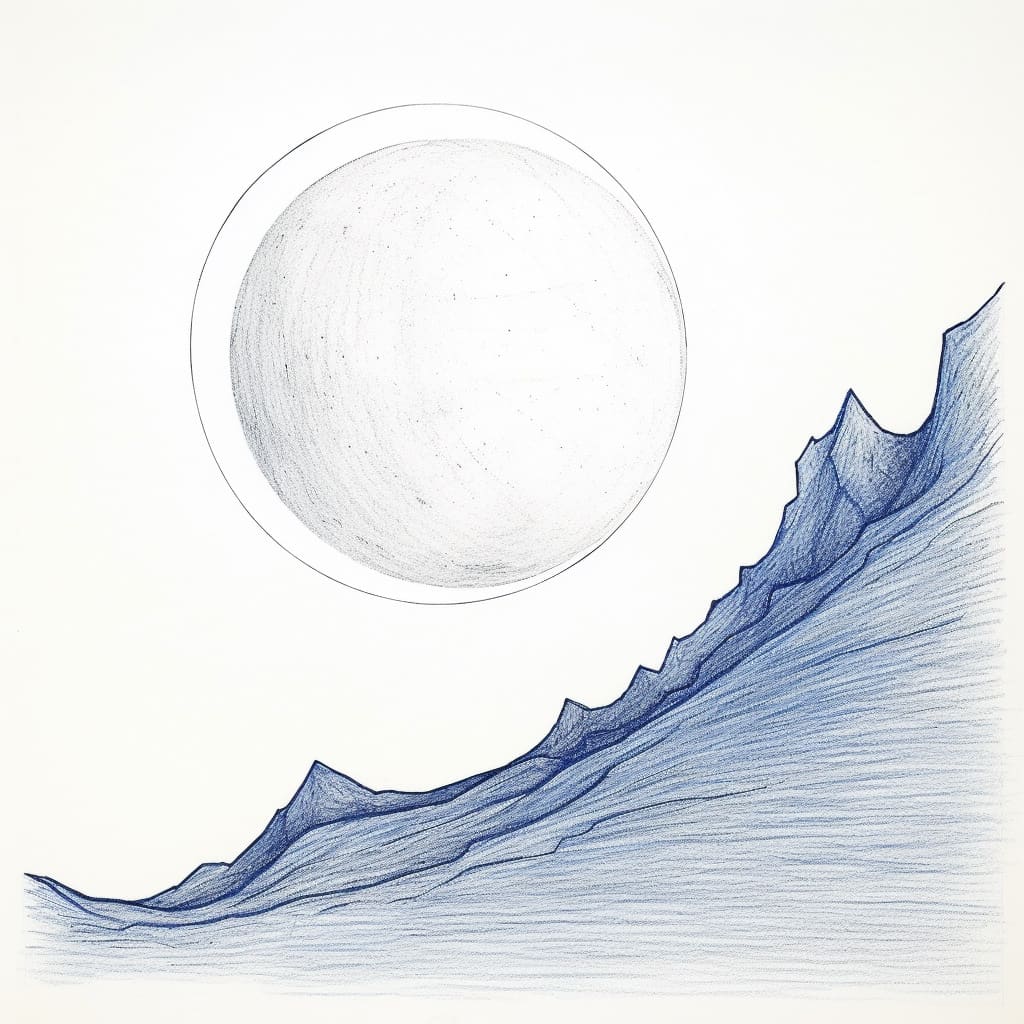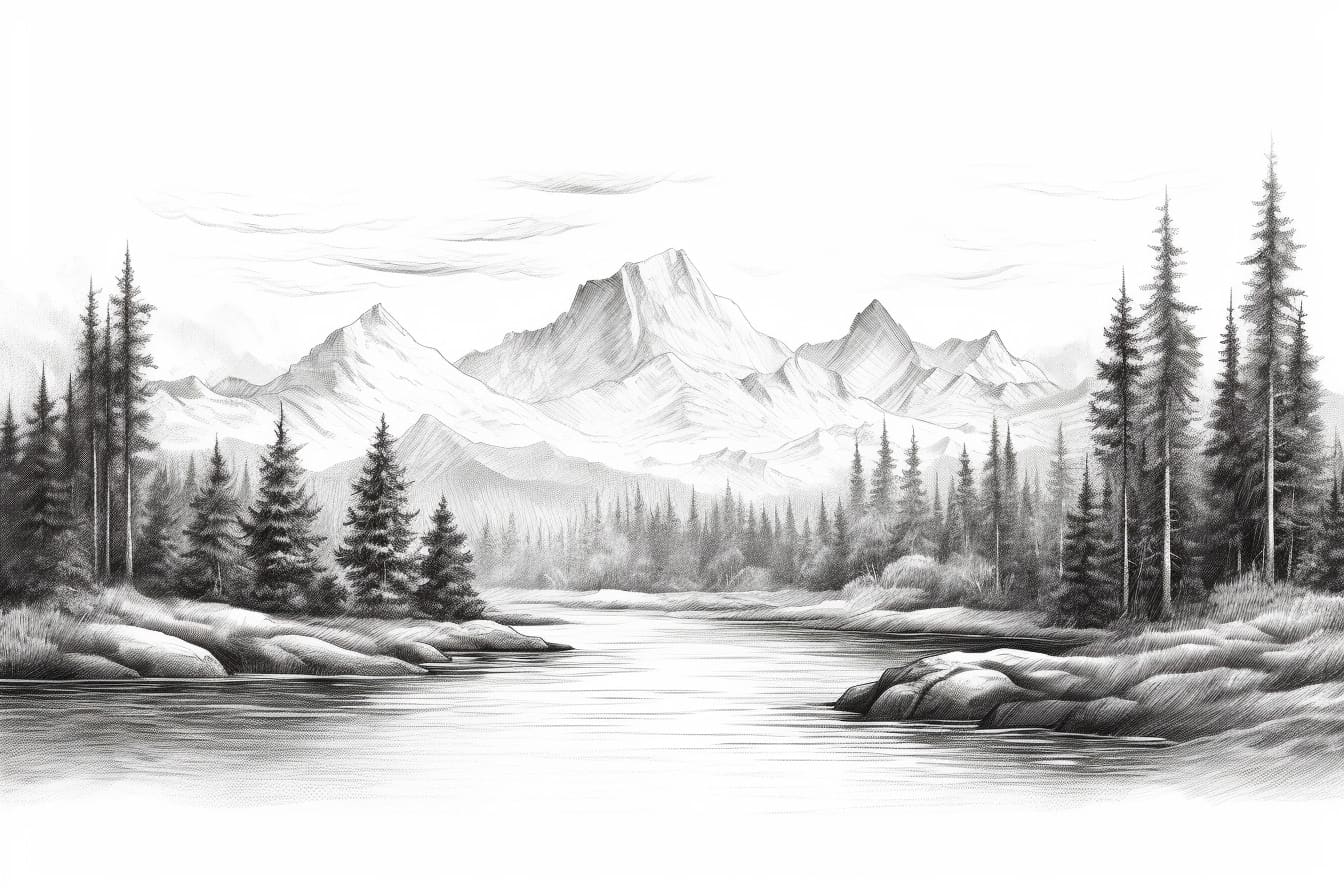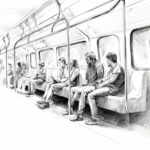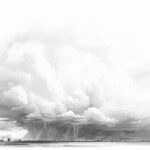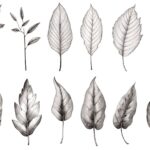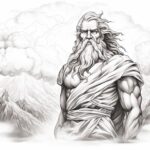Took my sketchbook to the overlook yesterday. Just sat there for hours. Watching. Drawing. Thinking about how wilderness landscape scenes work.
Nature’s not just one thing. It’s layers. Components. A symphony of elements that somehow play together perfectly.
Been thinking about how we approach these complex scenes. The intimidation factor. The where-do-I-even-start feeling.
Maybe that’s the wrong question. Maybe it’s not about starting with the whole. It’s about understanding the parts.
The Anchoring Elements: Mountains and Terrain
Mountains anchor a wilderness scene. They’re the backbone. The structure everything else relates to.
Started with simple mountain shapes. Just basic forms at first. Triangular. Dominant. The way they cut into the sky.
But real landscapes are rarely just one peak. Usually there’s a whole range. Different heights. Different distances. Creating depth through overlapping forms.
The trick with mountains isn’t detail. It’s restraint. The farther away, the less detail you need. Just hint at texture. Suggest rather than state.
When you get to the foreground, terrain gets more complex. Rocks become important character actors in your scene. They catch light. Create shadows. Offer texture.
Sometimes terrain creates dramatic moments. A cliff changes everything about a landscape’s energy. Creates tension. Suggests story.
In some environments, like the desert, the terrain itself becomes the main character. The shapes more pronounced. More sculptural. More exposed without the softening effect of vegetation.
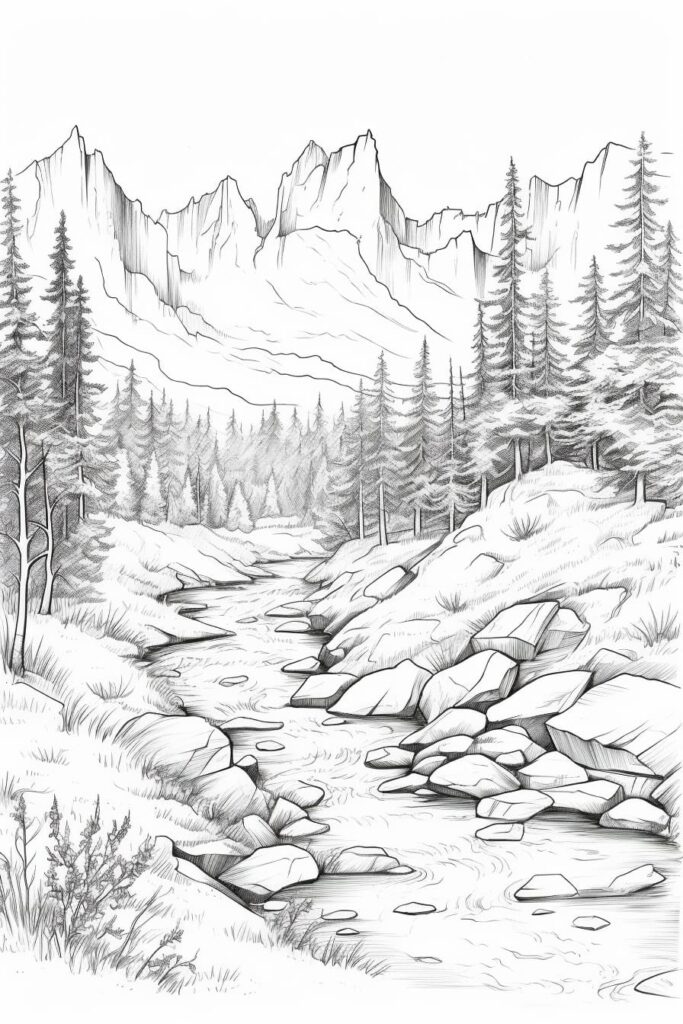
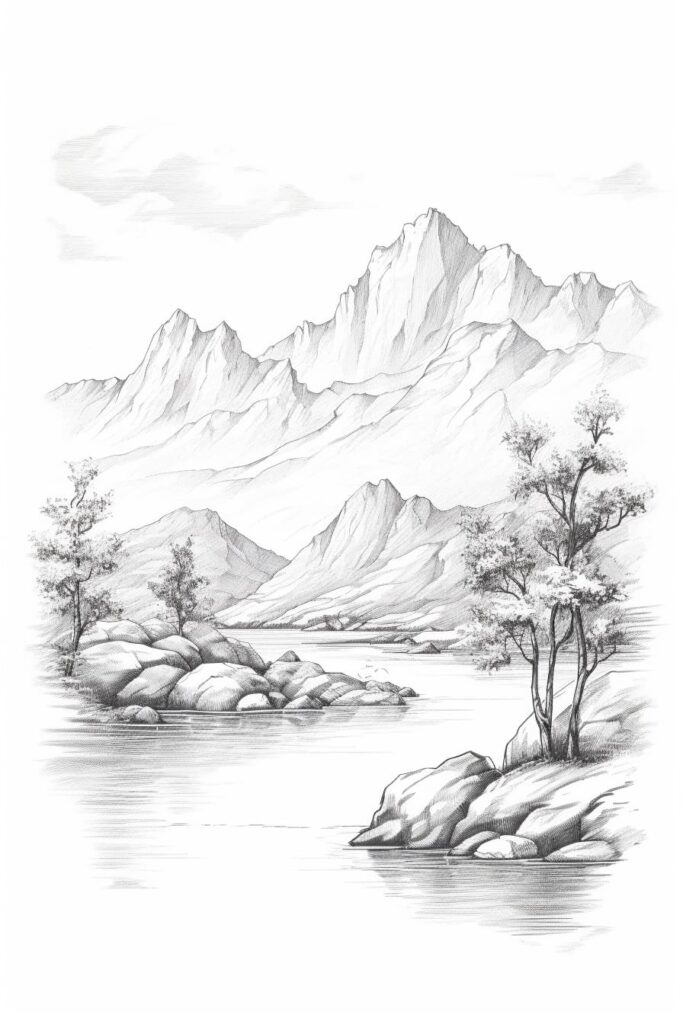
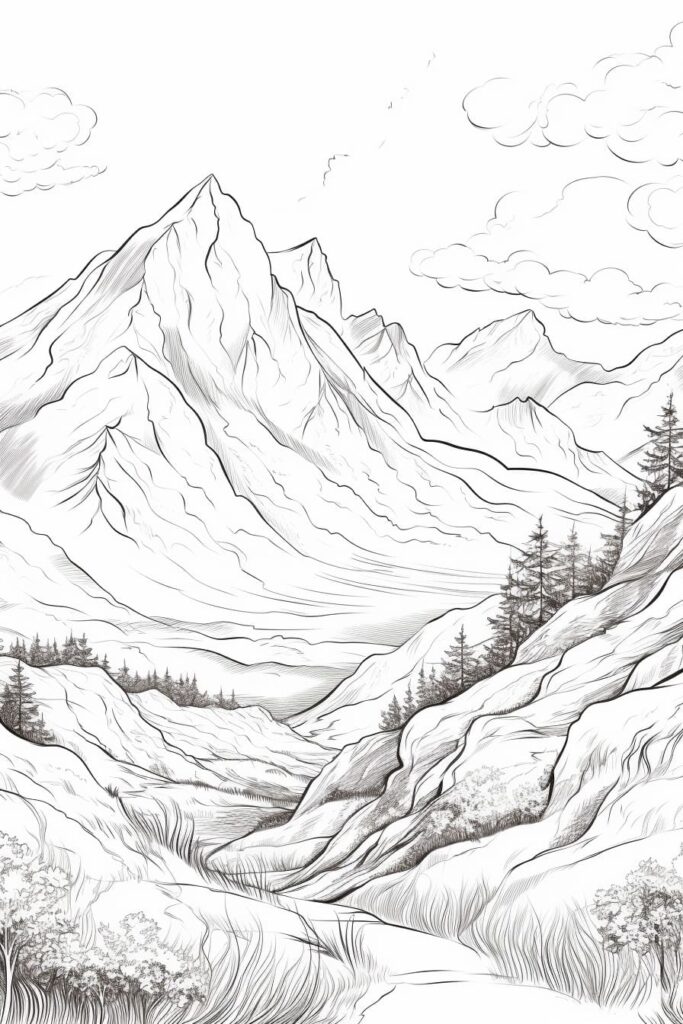
Vertical Elements: Trees and Forests
Trees are the vertical counterpoint to the horizontal sweep of land. They lead the eye upward. Create rhythm.
Started with a basic tree. Just trunk and general canopy shape. Getting the proportions right.
But trees are rarely alone. They gather in communities. Drawing a forest is different from drawing a single tree. It’s about patterns. Repetition with variation. Group dynamics.
The structure matters too. Tree branches follow their own logic. Not random. More like river systems spreading upward instead of downward. Always dividing into smaller and smaller channels.
Different environments feature different trees. A jungle tree has its own character. More chaotic. More layered. Different energy entirely from a pine or oak.
Some trees become icons in a landscape. A cherry blossom tree isn’t just botanical – it’s emotional. Cultural. It changes the entire mood of your composition.
Sometimes it’s worth studying the details too. Leaves on a tree aren’t just decoration. They’re fundamental to its character. Its texture. Its movement in wind.
Or focus even closer. A single falling leaf can tell a whole seasonal story. Suggest change. Impermanence. The passage of time.
Water Elements: Rivers, Lakes, and Movement
Water changes everything in a landscape. Reflects light. Creates movement. Shapes the land itself.
A river cuts through terrain. Creates natural leading lines. But rivers don’t move in straight paths – they meander. They create rhythm as they flow around obstacles.
Where water collects, you get lakes. Still water brings horizontal planes into your composition. Creates reflections that double the visual interest.
Sometimes water becomes dramatic. A waterfall introduces vertical energy. Dynamic force. The contrast between calm water above and turbulence below.
Water isn’t just the surface. It’s what happens beneath too. Seaweed creates underwater forests. Different rules. Different physics. Fascinatingly alien compared to land plants.
Where water meets land, you get transitional areas. An island creates focal points. Natural compositions of land surrounded by water. Microcosms of larger wilderness.
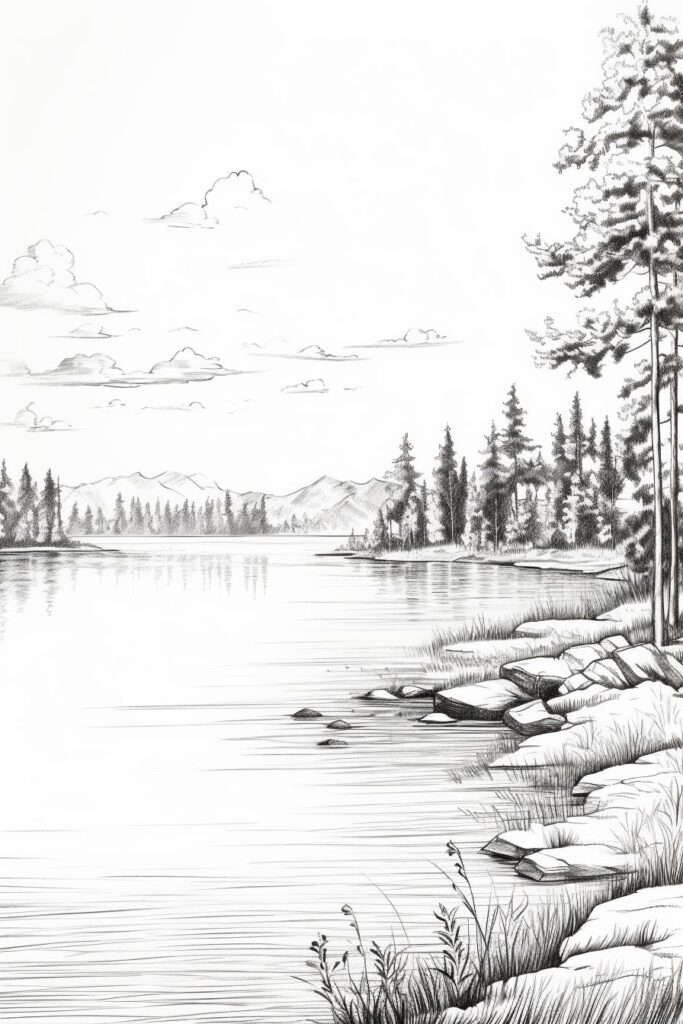
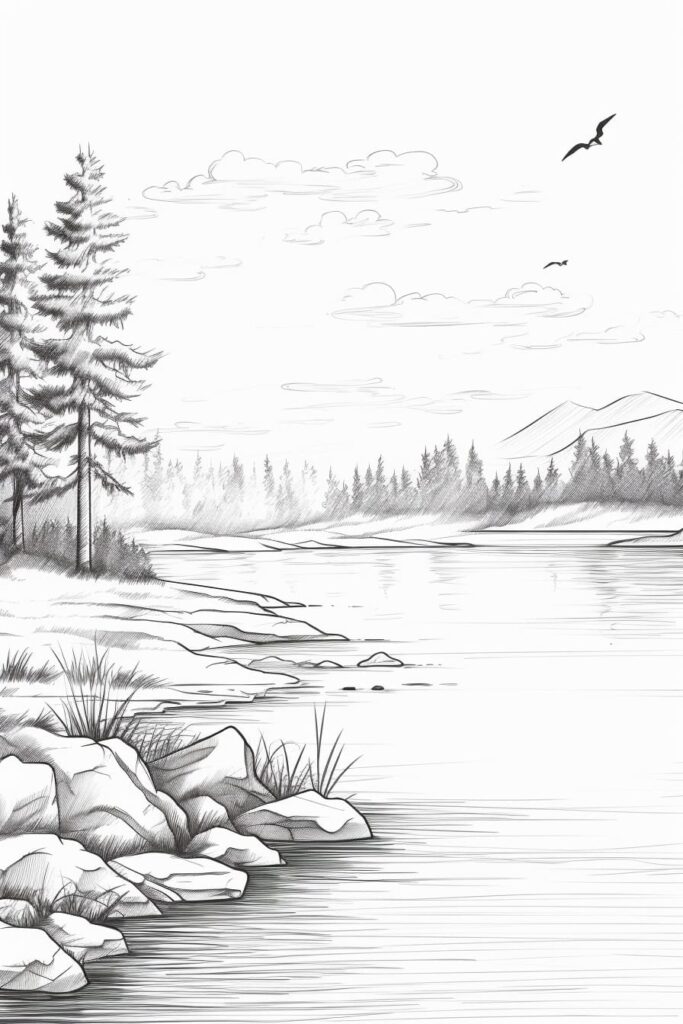
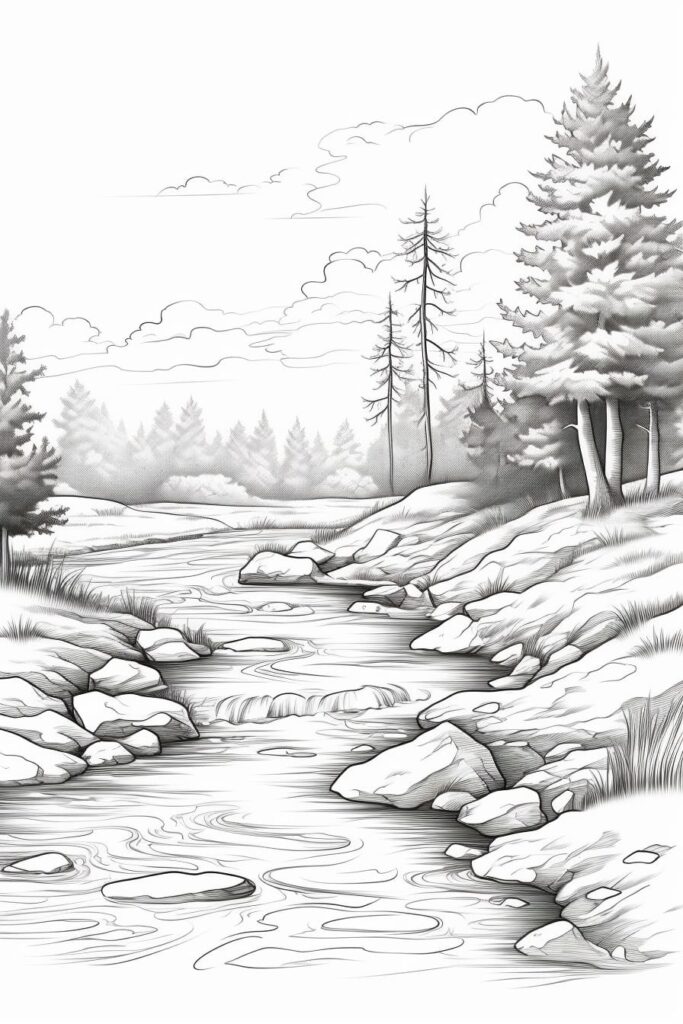
Sky and Weather: Setting the Mood
The sky isn’t just negative space. It’s a character in your landscape. It sets the emotional tone. Creates context for everything below.
Different weather conditions change your entire scene. Snow simplifies forms. Softens edges. Creates a quieter, more minimal landscape.
Time of day matters enormously. A sunset transforms colors. Creates dramatic lighting. Turns mundane scenes into breathtaking moments.
Sometimes atmospheric elements become focal points themselves. A rainbow arcs across the sky. Creates a natural compositional element that draws the eye and adds color.
Small Details: Life in the Margins
The big elements create structure. But it’s the small details that make a wilderness scene feel alive.
Individual leaves tell stories about season. Species. Health of the ecosystem. Different leaf shapes create different textures when massed together.
Sometimes unusual leaves become special focal points. A four-leaf clover or shamrock might be tiny in a landscape but adds personality. Suggests luck. Discovery.
Animals bring movement and life. Even something as simple as a seagull at the edge of a water scene completely changes the energy. Creates story. Implies an entire ecosystem beyond what’s visible.
Pulling It All Together: Compositional Thinking
Been thinking about how these elements work together. How a complete landscape isn’t just a collection of parts. It’s about relationships. Balance. Focus.
Some artists talk about the Rule of Thirds. Dividing your paper into a 3×3 grid. Placing key elements along those lines or at intersections. Creates more dynamic compositions than centering everything.
Found this fascinating article about creating landscape sketches that mentioned something liberating – unlike buildings or portraits, we can move elements in nature scenes. Adjust that tree. Shift that rock. The artistic license of landscape work.
Different biomes create different relationships. A desert landscape emphasizes terrain over vegetation. Creates stark, dramatic compositions with fewer elements.
Seasonal changes transform familiar scenes. A winter landscape reduces color. Increases contrast. Simplifies forms while adding new textural elements like snow and ice.
Sometimes it’s worth imagining landscapes beyond Earth entirely. A lunar landscape follows similar principles but with alien features. No vegetation. No water. Just light, shadow, and geological forms.
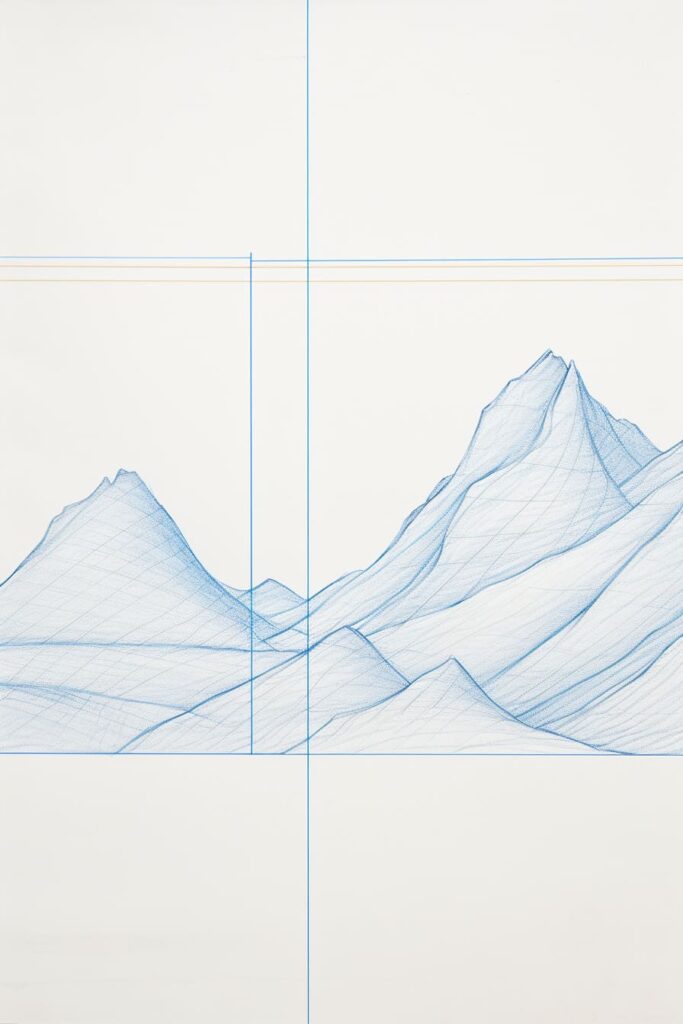
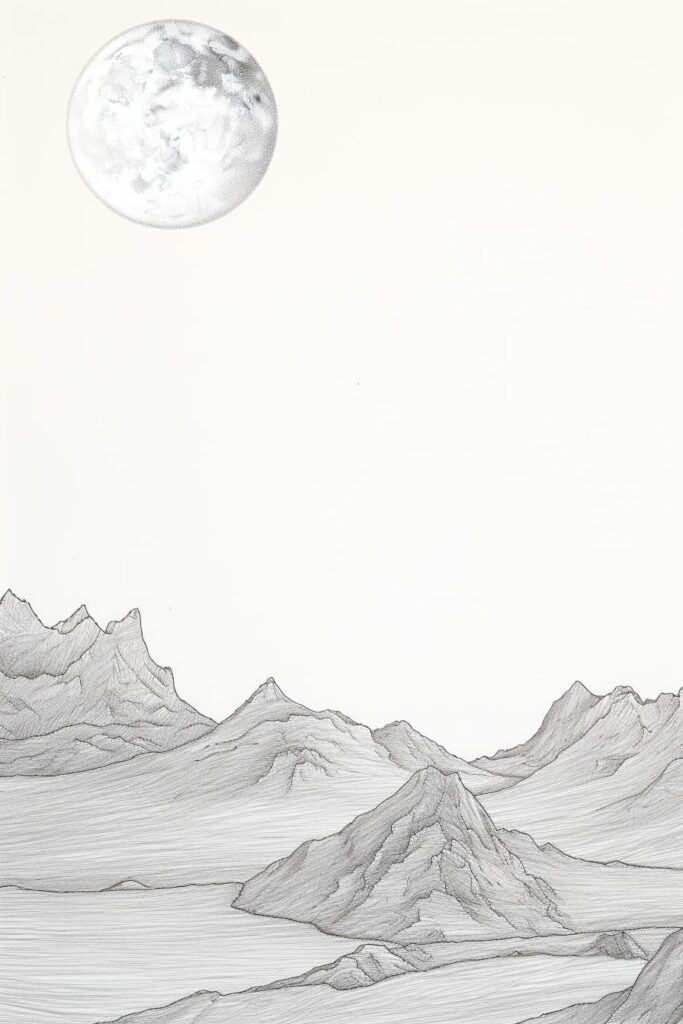
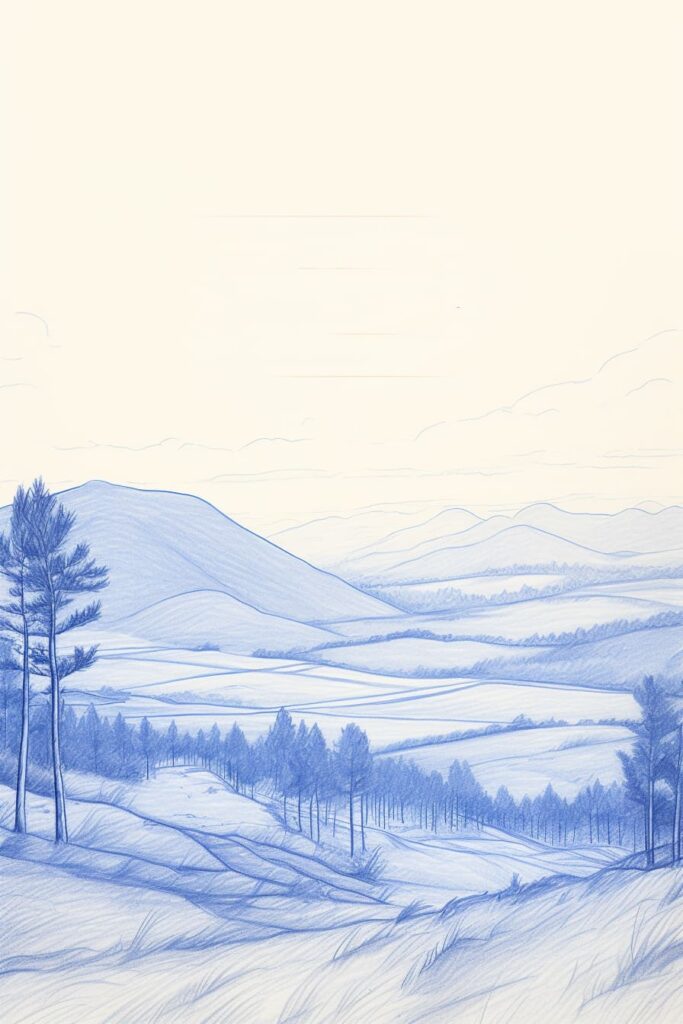
Historical Connection: Wilderness as Transformation
There’s something profound about drawing wilderness. Been reading about how 14th-century Franciscan painters used wilderness landscapes to signify places of miracles and spiritual transformation. Places set apart from everyday life.
Maybe that’s why we’re still drawn to these scenes. They represent something beyond the ordinary. Something transformative.
Field Notes: My Process for Wilderness Sketching
Here’s what I’ve learned about approaching these complex wilderness scenes:
Start with quick thumbnail sketches to explore compositions. Then move to the largest forms. Mountains. Land masses. Major water features. Block in their basic shapes and relationships.
Establish your horizon line early. It determines perspective for everything else.
Think in planes. Foreground. Middle ground. Background. Each plane gets progressively less detail, progressively lighter value.
Look for natural framing elements. Overhanging branches. Rock formations. Things that create windows into your scene.
Pay attention to where the light is coming from. It creates a unified logic for shadows across your entire composition. Try value studies focusing just on light and dark relationships before adding details – they’re like the skeleton of your drawing.
Connect elements with ecological thinking. Trees don’t grow in perfectly straight rows. Rivers shape the land around them. Everything relates.
Try different shading techniques for different textures. Hatching for rough bark. Smooth, continuous tones for calm water. Cross-hatching for complex undergrowth. Each technique speaks a different visual language.
Some researchers are exploring wilderness as a phenomenological landscape – focusing on the experience rather than just the appearance. Makes me think about how my drawings can capture not just what a place looks like, but how it feels to be there.
Remember that your goal isn’t photographic accuracy. It’s to capture the essence. The feeling. The fundamental truth of a place.
My coffee’s cold again. Been writing too long. But these notes help me organize my approach to those overwhelming wilderness scenes. Breaking them into elements. Understanding each piece before attempting the whole.
Tomorrow I’ll head back to the overlook. Same view. New understanding. New approach. One element at a time.
